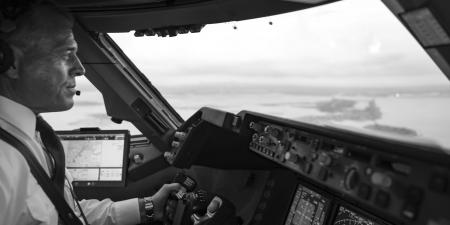 B747 across the Atlantic.
B747 across the Atlantic.
So you’re leaving work on a Friday evening in New York City, and suddenly the urge to head to Paris hits you. We’ve all been there. (Haven’t we? It’s not just us, right?) And you don’t just want to get on a plane and go, you want to hop in a Gulfstream and do the flying yourself. (We’ve been there too.)
Here’s our handy guide on flying from Teterboro Airport to Paris-Le Bourget. Keep it in your pocket for that jet-set Friday.
The first thing to do is file a flight-plan. It’s best to ask a professional organization to prepare the flight-plan for you. While they do that, find yourself a co-pilot and a flight attendant, ideally someone who makes a good cup of coffee. After that, it’s time to buckle yourself in, put on your headset, and prepare to make one of the most common, yet technically astounding, journeys today.

Take off
After Teterboro clears you for take-off, it’s time to get in touch with Boston, who will transfer you to Moncton Center. They’ll be the ones to give you clearance for the North Atlantic, even if you’ve already received clearance for your route to Paris (and escargot). From there you’re passed to Gander Center, who decide which routes everyone gets. This is where it gets exciting — will you get the exact route you requested? Some altitudes are bumpier than others, and you don’t want turbulence to spill that cup of coffee all over your outfit. Maybe you get a different track than expected.
The North Atlantic Organized Track System tidies up traffic flows across the Atlantic, creating lanes of traffic like a highway. Gander Oceanic is responsible for the tracks from east to west, and Shanwick Oceanic in Scotland manages the eastbound ones. Every day there are new tracks, and halfway through the day they switch direction. Without radar and as a major thoroughfare of global air travel, efficiently and precisely managing the North Atlantic is critical.
This is what allows the transatlantic traffic to flow smoothly every day, bringing vacationers and businesspeople and professional wanderers from the Old World to the New. If you look out the window, you’ll spot fellow flyers out over the clouds and serene water far below. Here everything is quiet, and the world seems very far away.
Across the Atlantic, that wide stretch of water whose crossing has always required pushing the limits of human ingenuity, you will have to check in with waypoints along the way.
Landing
After some contemplation on the human condition, it’s time to get in touch with Shanwick. Shanwick is a combination of two sets of transmitters, one in Shannon, Ireland, and one in Prestwick, Scotland. They will guide you across the Atlantic and to Paris. Maybe you’ll catch the sunrise, and you’ll remember what a big place the world is. In a bubble of your own, the vicissitudes of terrestrial concerns will pass you by.
Pilots who have made this journey thousands of times say it remains a special and rewarding experience. With the Northern Lights, and the Greenland icecap, and the stars and the glittering sheet of water below, it reminds us how much more of the world there is to see.
Enjoy your croissant and cafe au lait. And then, it’s time for the next adventure.
